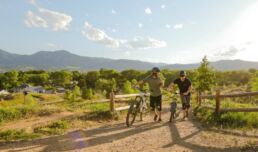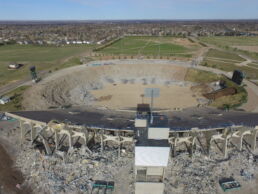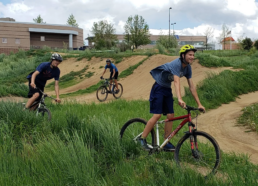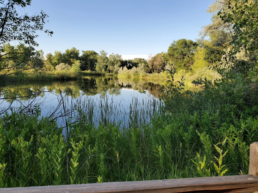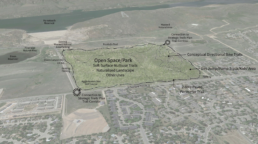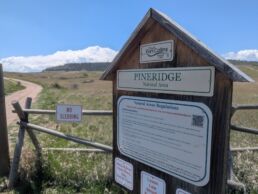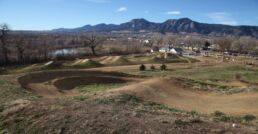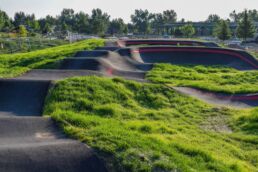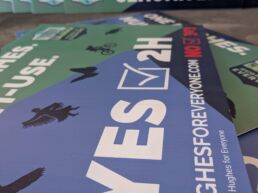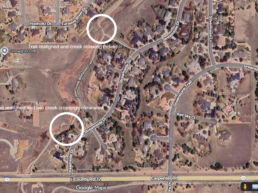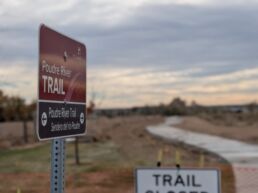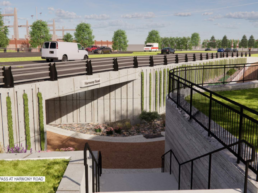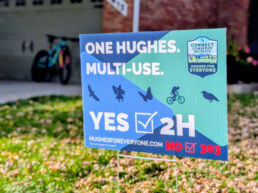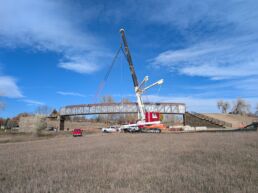Listen, I get it—turning Hughes into a Natural Area might sound like a good idea. If I didn’t know the full story, I’d likely agree with you. If someone approached me in a parking lot asking me to sign a petition to get the issue on the November ballot, I’d probably sign it. Who wouldn’t want more natural areas?
The truth is, the people pushing this idea aren’t being fully honest. At best, they’re being disingenuous. At worst, they’re straight-up lying.
If you’re for Hughes becoming a Natural Area, swell. I’m not trying to change your mind. I just want people to know the truth about what’s going on. Everything I’m sharing here can be fact-checked.
First, voters did not approve turning Hughes into a Natural Area in 2021. What we voted for was to rezone the property as Public Open Lands (Public Open Lands and Natural Areas are not interchangeable terms). That zoning allows for a wide range of future uses, including parks, recreation, natural areas, wildlife rescue, open spaces, and more. The key point is: we voted against housing on the site.
Also, let me be clear: no one is asking for a 164-acre bike park. Those of us advocating for a bike park support using only a portion of the site—not the whole thing. We want a multi-use space that includes a bike park (with adaptive cyclist features). For context, the world-renowned Valmont Bike Park in Boulder is just 42 acres—just a portion of Hughes. The Civic Assembly believes, and the bike people agree, the rest of the land should be used to serve the entire community—for more natural areas, wildlife rehab, Indigenous peoples’ gathering and cultural spaces, multi-use trails, outdoor education, sledding, disc golf, and other similar uses.
Supporters of the Natural Area plan claim that recreation like sledding and disc golf would remain. That’s not likely. In fact, per Fort Collins Municipal Code Sec. 23-193, sledding and disc golf are illegal at all existing Fort Collins Natural Areas. It specifically says, “Sledding is not allowed in any natural area,” on the FCNA website. In an email to me, an FCNA employee stated, “Those are not uses that are generally consistent with Natural Areas.” Could FCNA allow it if they wanted to? Yes, but it is not something they have historically done, currently do, or plan to do in the future. Sledding is not allowed in any Natural Area—full stop.
They also claim that a Hughes Natural Area would allow for recreation, but 27% of Natural Areas don’t allow bikes or even on-leash dogs. “Natural Areas are typically designated to preserve existing habitat.” —FCNA. So, no sledding, no disc golf, no purpose-built mountain bike trails—limited access and although admittedly unlikely, it is possible no access could be granted.
Another important point: Fort Collins Natural Areas had the chance to buy this property in 2016 when CSU vacated it—and they declined. Why? Because the $12 million purchase price and several million in remediation costs would come entirely out of their budget, limiting their ability to protect truly pristine land in the future. This is a direct quote from the Natural Areas Department Director: “Natural Areas’ purchasing power for other properties that become available in the next few years will be directly related to how many acres of Hughes end up managed as a City Natural Area.”
Along those same lines, FCNA has historically paid around $46,172 per acre for undeveloped land. Hughes cost $85,366 per acre. What happens to future conservation efforts if this price per acre becomes the new baseline?
UPDATE 05/30/2025 – In an effort to continue providing accurate and honest information, I wanted to update my statement regarding the foundation of Hughes still being under the surface.
During the Civic Assembly Meeting on April 12, the city made the following statement:
“The structure—obviously, the stadium—had water and electricity and sewer. That’s all in the ground there somewhere, as is all the footings and the concrete. They took the stadium down from the ground up; they did not dig out any infrastructure that was there.”
It turns out the information provided wasn’t accurate, and city staff have since modified their position. On May 29, staff provided YGR with the following statement:
“Based on the Phase I environmental report, the whole foundation was removed. All that remains are some scattered pieces of concrete, gravel, and compacted soil in the parking lot, and some underground utilities.”
I’m not in the business of spreading false information just to get a bike park on a portion of the Hughes site. The original post was accurate at the time, but since city staff have updated their position, I wanted to do the same.
That being said, the site is still far from its natural state. It has been heavily impacted by humans for at least 75 years—first as a staging area for the construction of Horsetooth Reservoir, and then as a 35,000-seat football stadium with accompanying gravel and asphalt parking lots.
Stadium infrastructure? Yep, still there. Via the City of Fort Collins during the Civic Assembly Meeting on April 12—and I quote: “There is a cell tower on the property currently. The structure—obviously, the stadium—had water and electricity and sewer. That’s all in the ground there somewhere, as is all the footings and the concrete. They took the stadium down from the ground up; they did not dig out any infrastructure that was there.” It will cost millions to remove leftover stadium and parking lot infrastructure. Much of the site has been heavily impacted and compacted for the previous uses, including large-scale parking lots, Horsetooth Reservoir construction and fill dirt mining.
The idea that we already have plenty of bike parks is simply false. Yes, our League of American Cyclists Platinum-ranked city has some scattered elements of bike parks around town—but we do not have a single, purpose-built bike park within city limits. Spring Canyon is NOT a bike park. It is a small dirt pump track—a feature of a bike park. The trails at Lory and Horsetooth do not offer the same user experience as a purpose-built bike park.
We’re growing bike culture—kids, adults, newcomers, lifelong riders—faster than our infrastructure can keep up. If you’re not immersed in it, you might not realize just how far behind we are. The demand has exploded, and what we have doesn’t even come close to matching it.
“Big-money bike lobby”? Yeah, no—just a group of local volunteers who value multi-use space with a free community bike park to ride, especially for families and kids of Fort Collins.
We live in a representative democracy where we elect leaders to make informed decisions on our behalf. This ensures we don’t have to become experts on every single element of running our city. Our elected officials settled on a Civic Assembly process to gather information and report back to them. The randomly selected Fort Collins delegates from all walks of life spent months doing just that. They reviewed data from thousands of community surveys submitted by people across the entire city, ensuring that everyone had a chance to share their opinions and interests as part of the process. They met with community leaders, department heads, subject matter experts, and so on. They did research on possible uses. They toured sites and debated among themselves.
After countless hours of study, they put all that information into a report that will be presented to City Council on May 27, and the Council will make a determination this summer. That report supports: Indigenous use and consultation, multi-use development including a bike park and trails, habitat restoration, outdoor community spaces, an outdoor education facility, a partial Natural Area designation, cultural and historical elements centered on Indigenous voices, and space for wildlife rehabilitation and learning.
The bike park advocates have played by the rules and will respect whatever decision Council makes. That’s how the system works. PATHS, however, has already demonstrated that they’re not willing to play by the rules. They didn’t like how the Civic Assembly process was trending, so they’ve decided to launch a ballot initiative and are using lies and deception to circumvent our democratic process and gather signatures. A ballot initiative is fine—great, even—but gaining community support with blatantly false information is not ok.
Again, I’m not asking you to take my word for it or even agree with me on the future of Hughes. I’m not. I’m asking you to look at the facts before you sign anything.
Sources and links below.
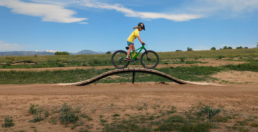
- Assembly Backs Hughes Multi-Use Plan (cycling website –sure it’s biased it’s mine but the facts remain true):
https://yourgroupride.com/assembly-backs-hughes-multi-use-plan/ - Coloradoan coverage of the Civic Assembly recommendations (paywall but support local journalism):
https://www.coloradoan.com/story/news/2025/05/05/fort-collins-civic-assembly-makes-recommendations-for-old-hughes-site/83428169007/ - Learn about the Civic Assembly process and Hughes site:
https://ourcity.fcgov.com/future-of-hughes - Civic Assembly Final Report: https://ourcity.fcgov.com/future-of-hughes
- Learn about bike parks:
https://www.focobikeparks.org/ - Fort Collins Municipal Code – Section 23-193:
https://library.municode.com/co/fort_collins/codes/municipal_code?nodeId=CH23PUPR_ARTIXNAAR_S23-193PRACPE - Natural Areas recreation regulations:
https://www.fcgov.com/naturalareas/recreation - Original 2021 Hughes ballot language):
https://ourcity.fcgov.com/future-of-hughes/news_feed/city-completes-purchase-of-hughes-property#:~:text=City%20completes%20purchase%20of%20Hughes,2024%20to%20determine%20next%20steps.
If you enjoy this content and appreciate the hustle that goes into YGR please consider supporting the site.
